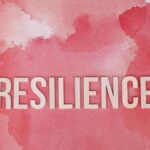Consumerism is undergoing a seismic shift. The traditional model of passive “customers” mindlessly buying products is fading into the background. In its place emerges a more discerning and engaged breed: the conscious consumer. These individuals prioritise ethical practices, environmental responsibility, and a sense of belonging with the brands they support. These days people aren´t just buying products; they’re actively seeking partnerships with companies that align with their values.
This shift presents both a challenge and an opportunity for businesses. How can you transform fleeting customer relationships into long-lasting stakeholder partnerships? The answer lies in creating a community of advocates, a loyal tribe that feels invested in your company’s success.
The Rise of the Conscious Consumer
Gone are the days of flashy advertising and empty promises swaying consumer decisions. Today’s conscious consumer is armed with information and empowered by technology. They research brands, scrutinise supply chains, and seek companies that prioritise ethical sourcing, fair labour practices, and environmental sustainability.
But it’s not just about the product itself. Conscious consumers crave authenticity and transparency. They want to connect with brands that share their values and have a positive impact on the world. They’re disillusioned with the faceless corporation and yearn for a deeper sense of community.
This shift in consumer behaviour requires a fundamental rethinking of brand strategy. Here’s how you can cultivate a community of loyal stakeholders in the age of the conscious consumer:
1. Building Trust Through Authenticity
The foundation of any strong relationship is trust. In the age of conscious consumption, this means building a brand based on authenticity and transparency. Here’s how:
- Be open and honest about your practices: Share your company’s story, from your mission statement to your manufacturing processes. Highlight your commitment to social responsibility and sustainability efforts.
- Embrace feedback and criticism: Don’t shy away from negative feedback. Acknowledge concerns, address issues promptly, and demonstrate a willingness to learn and improve.
- Empower your employees to be brand ambassadors: Your employees are the heart and soul of your company. Invest in their well-being, provide opportunities for professional development, and empower them to share their experiences with your customers. Happy employees translate into a more authentic brand voice.
2. Fostering a Culture of Community
The future of business lies in fostering communities, not just customer bases. Here are some ways to cultivate a sense of belonging:
- Create interactive platforms: Utilise social media effectively, not just for marketing, but to create a space for conversation and interaction. Encourage customer feedback, host online discussions, and facilitate connections between customers who share your brand values.
- Organise community events: Host workshops, seminars, or volunteer opportunities that align with your brand’s mission. This allows customers to connect with each other and feel like they’re contributing to something bigger.
- Recognise and reward loyal customers: Show your appreciation for your most engaged customers. Offer exclusive discounts, early access to new products, or personalised experiences. Remember birthdays, anniversaries, and other milestones to make them feel valued.
3. Empowering Customers Through Collaboration
Conscious consumers crave a sense of ownership and influence. Here are ways to involve them in your brand story:
- Crowdsource ideas and feedback: Run online polls or contests to gather customer input on product development, marketing campaigns, or even company decisions. This empowers customers and gives them a sense of agency.
- Offer co-creation opportunities: Collaborate with loyal customers on product design, packaging, or even marketing campaigns. This fosters brand loyalty and creates a sense of shared ownership.
- Embrace user-generated content: Encourage customers to share their experiences with your brand on social media. This creates authentic marketing content and showcases the real people behind your brand.
4. Investing in Shared Success: From Customers to Stakeholders
The next level of customer engagement is turning them into stakeholders. Here’s how:
- Equity crowdfunding: Platforms like SeedLegals and Crowdcube allow companies to offer shares directly to customers. This gives them a financial stake in your success and strengthens the sense of shared ownership.
- Loyalty programs with a twist: Move beyond traditional points systems. Offer exclusive perks like early access to sales, voting rights on company decisions, or invitations to investor meetings.
- “Soft dividends”: Not everyone is interested in traditional financial returns. Consider offering non-monetary rewards to loyal customers, such as exclusive merchandise, insider experiences, or discounts on future purchases.
5. Building a Sustainable Future Together
Conscious consumers are rightly concerned about the environment. Here’s how your brand can demonstrate its commitment to sustainability:
- Focus on sustainable practices: Source materials ethically, reduce your carbon footprint, and minimise waste throughout your production process. Be transparent about your environmental efforts and highlight your sustainability goals.
- Support environmental causes: Partner with environmental organisations or sponsor initiatives that align with your brand values. This showcases your commitment to a greener future and resonates with conscious consumers.
- Offer eco-friendly products and services: Develop products with sustainable materials, promote reusable packaging options, and offer services that reduce environmental impact.
The Transformation Mindset: From Short-Term Gains to Long-Term Impact
Building a community of loyal stakeholders requires a shift in mindset. It might once have been about short-term sales and profit margins, but now you must foster genuine connections, shared values, and a commitment to a common purpose. Here are some key takeaways:
- Authenticity is key: Conscious consumers can smell a marketing ploy a mile away. Build a brand based on transparency, honesty, and genuine passion for what you do.
- Community matters: Create a space for interaction, collaboration, and shared experiences. People want to feel connected to something bigger than themselves, and your brand can be that space.
- Empower your customers: Give your customers a voice. Involve them in your decision-making processes, reward their loyalty, and treat them like partners in your success.
- Invest in the future: Commit to sustainable practices and ethical sourcing. Conscious consumers care about the impact their choices have on the planet, and your brand should too.
The Road to Success: Building a Thriving Stakeholder Ecosystem
Ultimately, when cultivating a community of loyal stakeholders it´s key to build a brand that resonates with people’s values, inspires them to make a difference, and empowers them to be a part of something bigger. As Simon Sinek famously said, “People don’t buy what you do; they buy why you do it.” In the age of the conscious consumer, this rings truer than ever.
Ready to Embrace the Future?
Here are some additional questions to consider:
- How can you measure the success of your stakeholder engagement efforts?
- What challenges might you face in building a community around your brand?
- How can you ensure your company culture aligns with your commitment to conscious consumerism?
- Share your thoughts and experiences with building a loyal customer base in the comments below.
By prioritising authenticity, community, and shared values, you can transform your customer base into a thriving ecosystem of loyal stakeholders. This dedicated community will not only support your business but also become your biggest advocates, propelling your brand towards a brighter and more sustainable future.
____________________________________________________
If you’ve enjoyed reading today’s blog, please share it (links below).
Learn how to get your brand in front of your ideal clients with this free marketing guide
Latest Blogs
- 8 Easy Fixes for a User-Friendly Mobile Website
- How to Spot a Resilient Business
- 8 Proven Strategies to Empower Your Remote Workforce
- How Entrepreneurs can Squeeze the Best out of the Rest of 2024
- 8 Ways Entrepreneurs Can Close Presentations with a Bang







